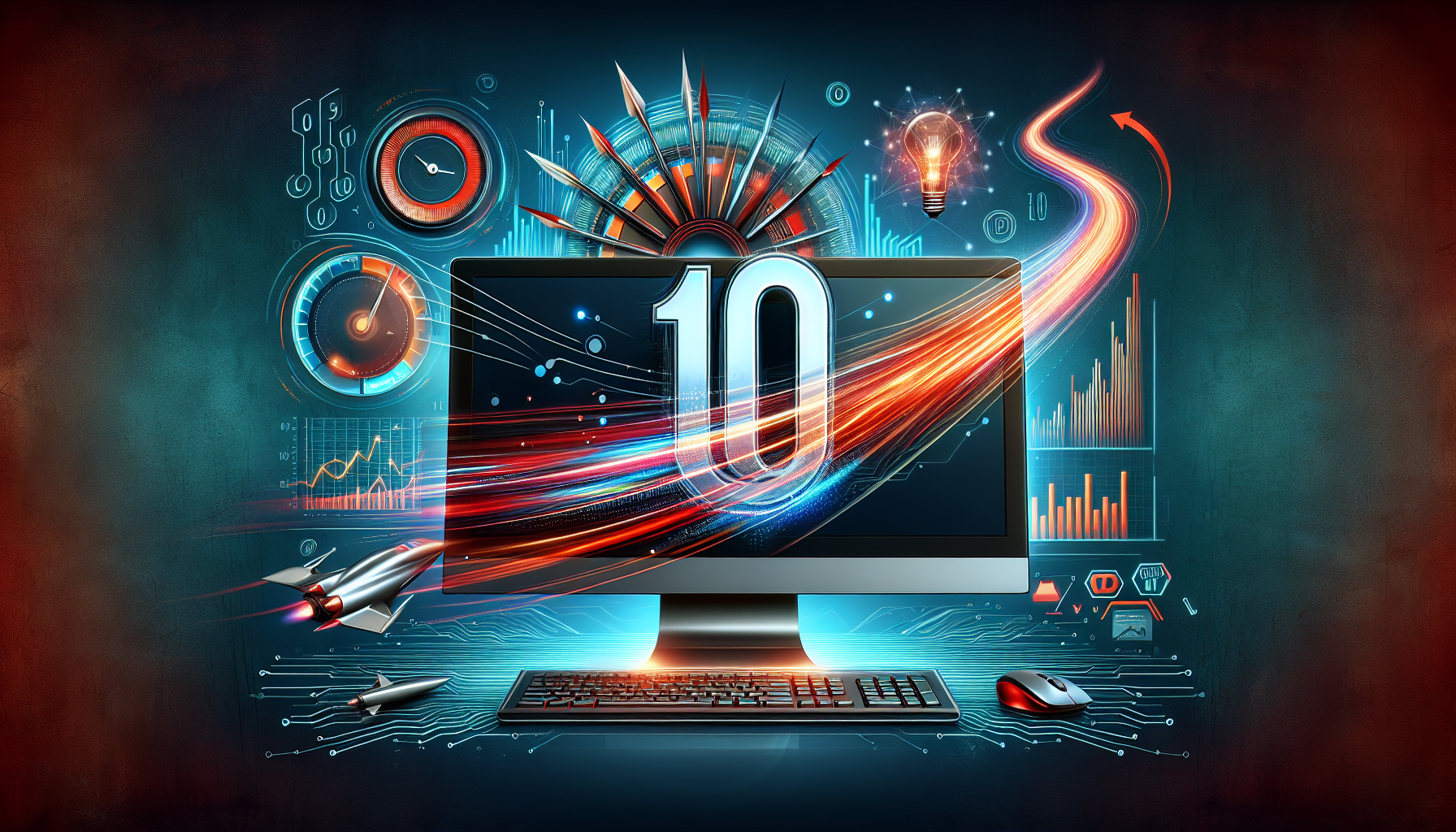Tech
10 Proven Strategies to Accelerate Your Business Computer’s Performance

Is your business computer slowing down like a turtle on a lazy day? You’re not alone! Many of us have experienced the frustration of a lagging machine, especially when deadlines loom. But don’t worry—there are plenty of easy and effective ways to supercharge your computer’s performance and get back to being productive. Here, we’ll dive into 10 proven strategies that will help you make the most of your machine. Ready to upgrade your tech game?
1. Uninstall Unused Programs
Let’s kick off with the first and easiest step: uninstalling programs you don’t use anymore. Over time, computers accumulate a bunch of software that can slow them down.
- Why it Helps: Every program you leave on your computer consumes resources. By getting rid of unnecessary ones, you free up memory and processing power.
- How to Do It: Go to your Control Panel or Settings, find the “Programs” section, and start clicking “uninstall” on anything you haven’t touched in ages!
2. Keep Your Software Updated
Your operating system, antivirus, and other essential software need regular updates to perform at their best. Using outdated software can lead to performance lags and security vulnerabilities.
- Why it Helps: Updates fix bugs, improve speed, and enhance security. Plus, they often include performance improvements!
- Tip: Turn on automatic updates where possible so you never miss out.
3. Optimize Your Startup Programs
Have you ever noticed that your computer takes forever to boot up? A lot of that sluggishness can be attributed to programs loading on startup.
- Why it Helps: By limiting what loads when your computer starts, you can dramatically decrease boot times.
- How to Do It: Open Task Manager (Ctrl + Shift + Esc), click on the “Startup” tab, and disable programs you don’t need right away.
4. Upgrade Your Hardware
Sometimes, your hardware just can’t keep up. Upgrading components like RAM or adding an SSD (Solid State Drive) can provide massive performance improvements.
- Why it Helps: More RAM means more multitasking capability, while an SSD can boost load times significantly.
- Cost Consideration: While hardware upgrades can be pricey, they often cost less than a new computer and can breathe new life into your current system.
5. Clean Your Hard Drive
A cluttered hard drive can greatly impact performance. Clearing out old files and organizing what you keep can help.
- Why it Helps: Less clutter means faster access to what you need. Plus, a clean hard drive can help your backup processes run more smoothly.
- How to Do It: Use built-in tools like Disk Cleanup (Windows) or apps like CleanMyMac (for Mac users) to help speed up this process.
Pro Tip: Don’t forget to regularly empty your Recycle Bin too!
6. Manage Your Disk Space
Did you know that keeping your hard disk at an optimal space level can boost performance? Aim to keep at least 15% of your hard drive free.
- Why it Helps: Windows and other operating systems need space to create temporary files for performance. A full disk can lead to slowdowns.
- Tip: Use cloud storage services to offload files you don’t constantly need on your computer.
7. Use Disk Defragmentation Tools
If you’re using a traditional HDD, defragmenting your disk can help. Fragmented files mean your computer takes longer to read and write data.
- Why it Helps: By organizing fragmented data, your computer can access files more efficiently.
- How to Do It: Windows has a built-in tool called Disk Defragmenter. Just search for it in your start menu and let it work its magic.
8. Disable Visual Effects
While those animations and effects look pretty, they can seriously eat into your performance, especially on older machines.
- Why it Helps: Reducing or disabling visual effects can free up resources for more important tasks.
- How to Do It: Search for “Performance Options” in your system settings, then select “Adjust for best performance” or customize to your liking.
9. Run Antivirus and Antimalware Scans
Malware can sneak onto your computer and slow it down without you even realizing it.
- Why it Helps: Regular scans can eliminate threats that hog resources and help maintain a smooth-running system.
- Recommendation: Use trusted software like Malwarebytes or Windows Defender for best results. Schedule regular scans to stay vigilant.
10. Consider a Fresh Operating System Install
If all else fails, reinstalling your OS can provide the clean slate your computer desperately needs.
- Why it Helps: A fresh install can remove unwanted bloatware, old drivers, and hidden issues that may be killing performance.
- Caution: Always back up your files before taking this step, as reinstalling will erase everything!
Conclusion
So there you have it—ten solid strategies to give your business computer a performance boost! Whether it’s simple software management or a hardware upgrade, these tips can make a world of difference. Remember that a well-maintained computer not only speeds up your workflow, it can also reduce stress and frustration.
If you’re interested in more tech tips and tricks to maximize your productivity, check out our other articles on NewsDayBreak. And don’t forget to check resources like Pew Research or Statista for the latest statistics and insights into tech trends.
Now go forth and transform that sluggish computer into a lean, mean, productive machine! Your work life will thank you.
-

 News1 day ago
News1 day agoTeenage US Citizen Records Brutal Arrest by Immigration Agents Who Told Him, ‘You Have No Rights’
-
News23 hours ago
Maltese Police Officers Participate in Operation in the Black Sea
-

 Business1 day ago
Business1 day agoNavigating the Economic Landscape: Key Insights from Today’s Business Headlines
-

 News22 hours ago
News22 hours ago“Honoring Ukraine: A Tribute” (July 26, 2025) — dynamo.kiev.ua
-

 Business21 hours ago
Business21 hours agoThe Top 10 Business Opportunities to Watch in 2025
-

 Entertainment1 day ago
Entertainment1 day agoCinematic Success: Fun Facts About Movies That Shaped the Film Industry
-

 Business23 hours ago
Business23 hours agoNavigating the Shifting Sands: Key Global Economic Trends for 2024
-

 Entertainment23 hours ago
Entertainment23 hours agoBehind the Magic: Unveiling the Secrets of Iconic Film Productions
